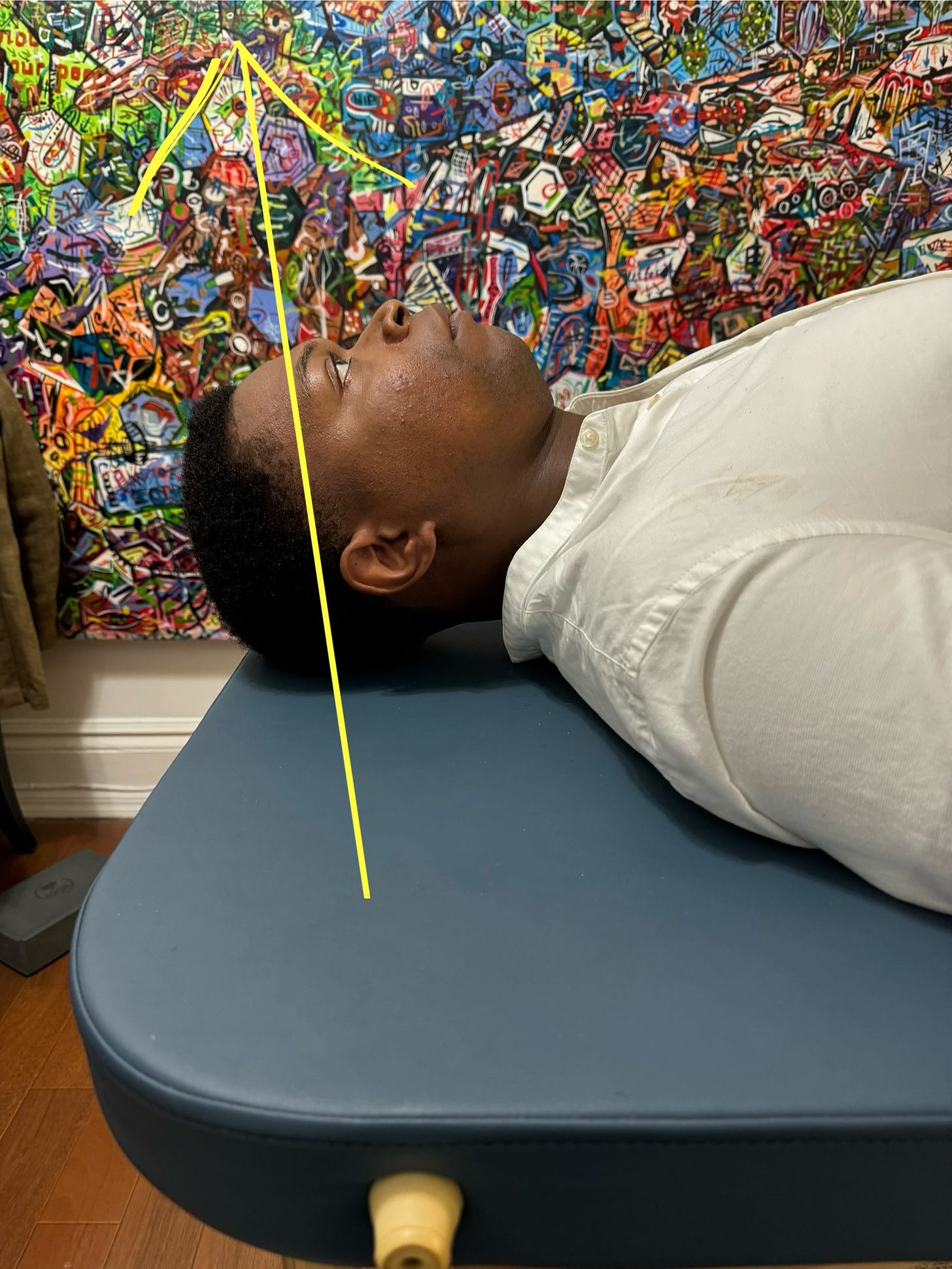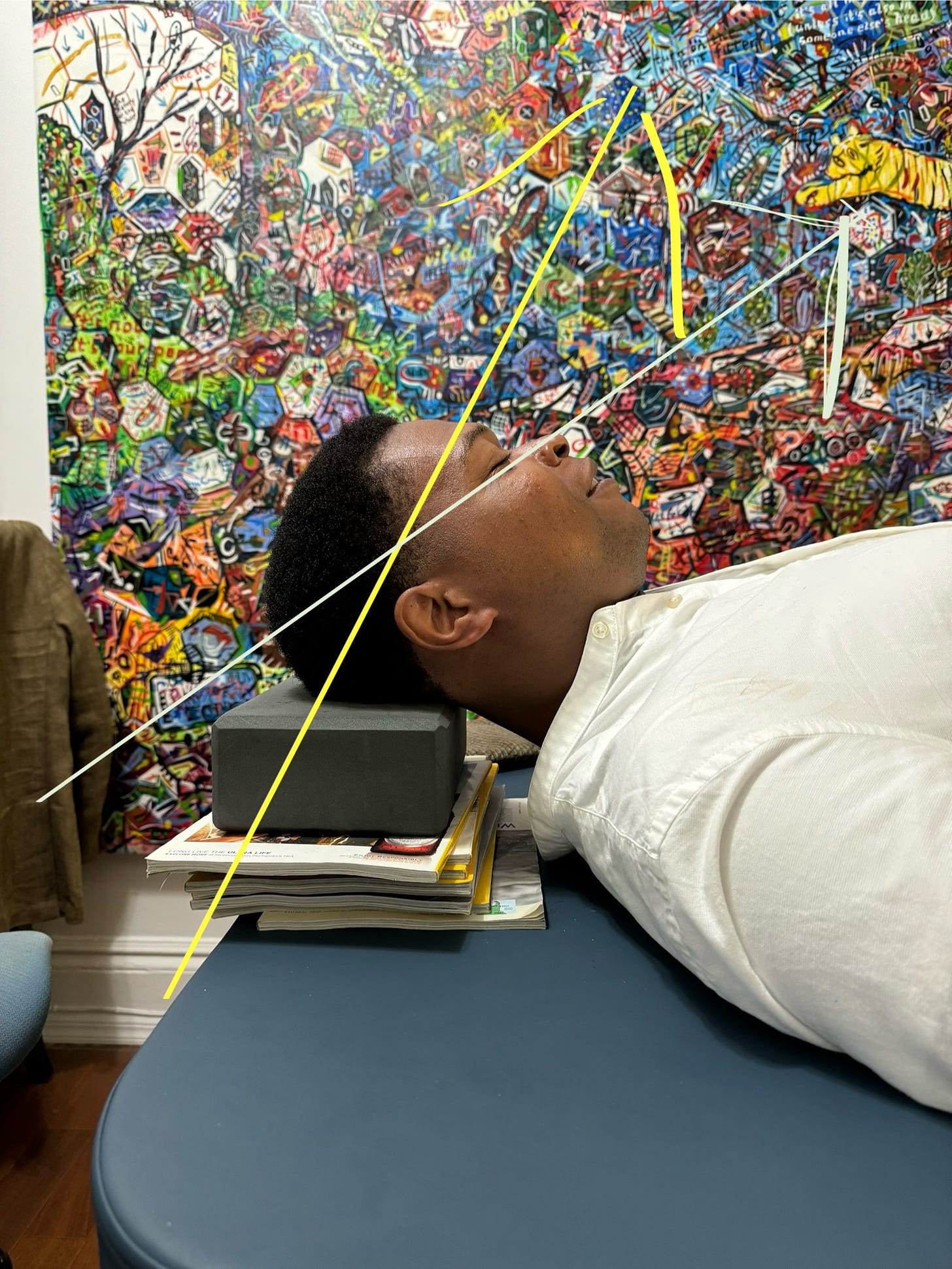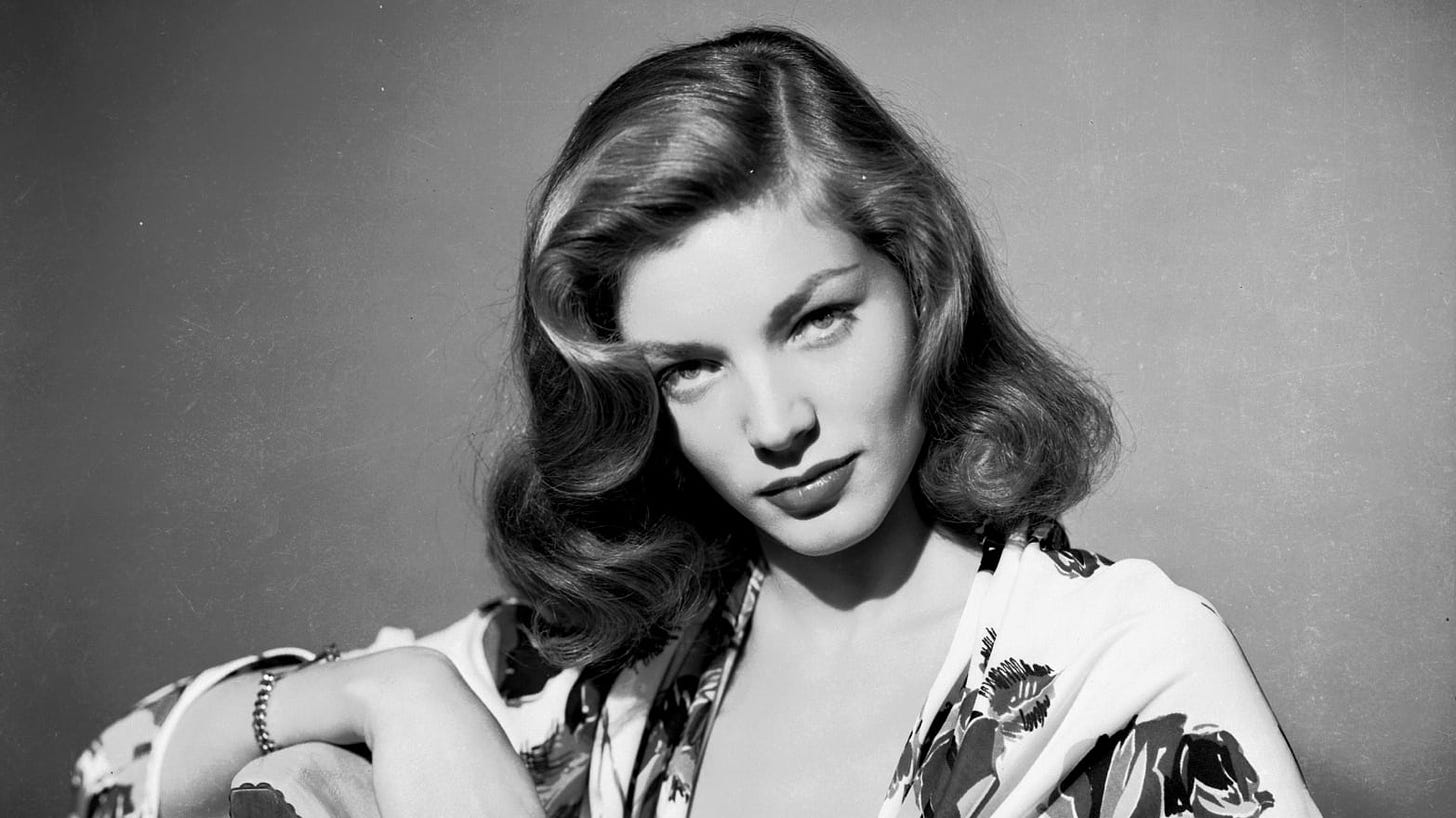It’s been a long time since I’ve written much of anything about Lying Down. I think it was my 3rd post or something and then I’ve mentioned here and there that I hope you do at least one lie down daily. Seems a bit silly that I haven’t written more about it, eh?
Well you’re in for a treat Ladies and Germs! Today I’ll give you some technical details on the height of the book. It’s something that I explain to every student in their first lesson, but I KNOW it gets forgotten. This isn’t anything that anyone explained to me in an Alexander Technique lesson; it was more or less implied. Hopefully this will help you explore!
If you haven’t already checked out my first post on Lying Down, you must absolutely read this for any of this post to make sense!
Your Height Matters
When we place books under the head, we prop the head ‘forward’ relative to the torso. The height that you choose will simulate how the head is pitching (up/down) as well. I’ll walk you through some examples to explain my meaning and show you some pictures of my student, Amara, to drive the point home.
Example 1 - No Books
If we take all of the books away and allow our head to rest flat on the ground, you will notice that you have some pressure building in the throat and that your skull is looking up. I emphasise skull here because the eyes are free to look anywhere (you can see the direction of the eyes in this photo).
Why is this an important detail to recognise?
If the skull is pitching up relative to the back, you need to know this. I have found there is a world of difference in neck tension if:
My head is pitching up and my eyes are looking down or
My head is pitching up and my eyes are looking in the same direction (pictured above)
When my eyes are looking in the same direction as the orientation of my head, I feel a reduction in neck tension. Much like the difference between a soccer player making a no-look pass or looking at where they want the ball to go, everything is just easier when your attention and your orientation are in sync.
Example 2 - Hundreds of Books
If we prop our head up on a ton of books - Hundreds of Books - you will notice that you are looking down into your lap; as if you are looking at your wretched phone. You will notice that your eyes are making no attempt to look up. It’s something you could do, but it would feel very strange!
Sometimes people will feel a lot of tension along the trapezius (at the tippy top near the skull) and want to stretch it out. This is totally fine and you can take a minute to stretch this. When I first propped Amara’s head up this tall, he felt a bit uncomfortable (which is normal). However, I then reminded him to soften the muscles along the entire base of the skull. The resulting release of tension made this a more comfortable height (relative to being propped up AND having a stiff neck) and gave him a very subtle stretch up there.
This kind of stretch is fine for 30 - 60 seconds, but if you hang out with a high book height like this you will eventually feel tension build back up into the neck and you really will struggle to release it. Try to change you height and be more comfortable BEFORE this happens. :)
Example 3 - Looking Forward vs Slightly Down
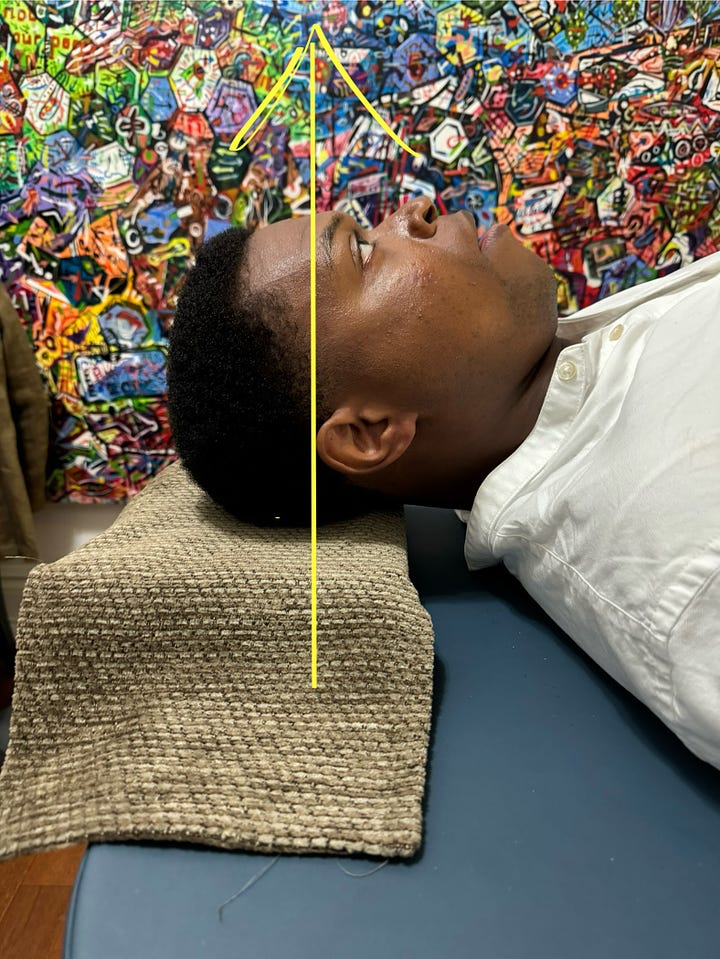
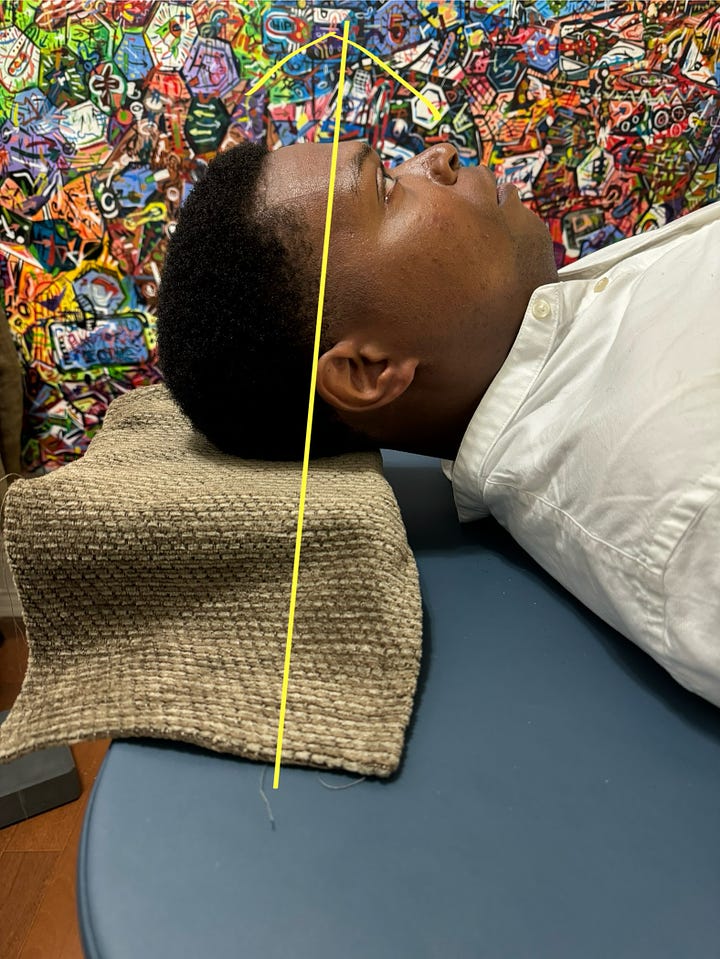
If you try out examples 1 and 2 for yourself, I think most anyone would be able to sort out the differences that I’ve described. If you don’t get what I talking about, ask me!
Where things get subtle is when we approach something near the forward position. In the two examples above, Amara feels a difference in his overall ease, atlanto-occipital tension, and breathing. The only reason he is able to sense this is because he is taking his time and allowing himself to make observations. He also is not fixing his eyes downward.
If there is any attempt to rush about and quickly figure out the difference…or directly attempt to force the head to be somewhere…. well… then literally nothing will happen and we’d both be better off making lunch.
Example 4 - The Look
Ok John, why are you showing me a picture of Lauren Bacall when you’re talking about book height? Who drugged your coffee today?
If you take a look at the head and the eyes, you’ll see that the eyes have this slightly upward orientation in the head. When I do this upward look myself, I feel my eye muscles kick into gear as if they were getting a work out (simply by looking…not by making an effort). I think one of the downsides of working long hours at the computer (and wearing glasses in my case) is that the muscles around the eye become Set in Stone. We lose the full range of motion in those peepers and this feels like it’s intimately tied to having a heavy head.
Any decent lesson in the Alexander Technique involves the teacher giving the student some kind of visual queue to help prevent the eyes from drifting towards a set spot. If you are going to explore how the book height affects neck tension, you must include The Look as well.
Stay In The Attic
The things I’m describing today are extremely subtle and wildly important if you are looking to develop an understanding of the head, neck, and back relationship. These details are here so that you can have a better sense of the centre of the weight of your head (near the temples. towards the maximal backward depth of the eye). I’ve heard of a teacher that referred to this awareness as “Staying in the Attic”.
When a head moves, the neck does not need to bully the head about. You simply look at the thing you want to check out. If you are quiet and allowing that neck to free, you will notice that the animation of the head will directly animate the entire torso UP if you let it.
So take your time during your lie downs and explore all of the variations I’ve described today. It will take you no more than 5 minutes after you’ve found a bit of quiet. You are worth the time!
Get In Touch
If you’re in NYC, you may learn more about my private teaching practice at johndalto.com.
If you’d like to book any lesson time with me, you can find my booking link here.



